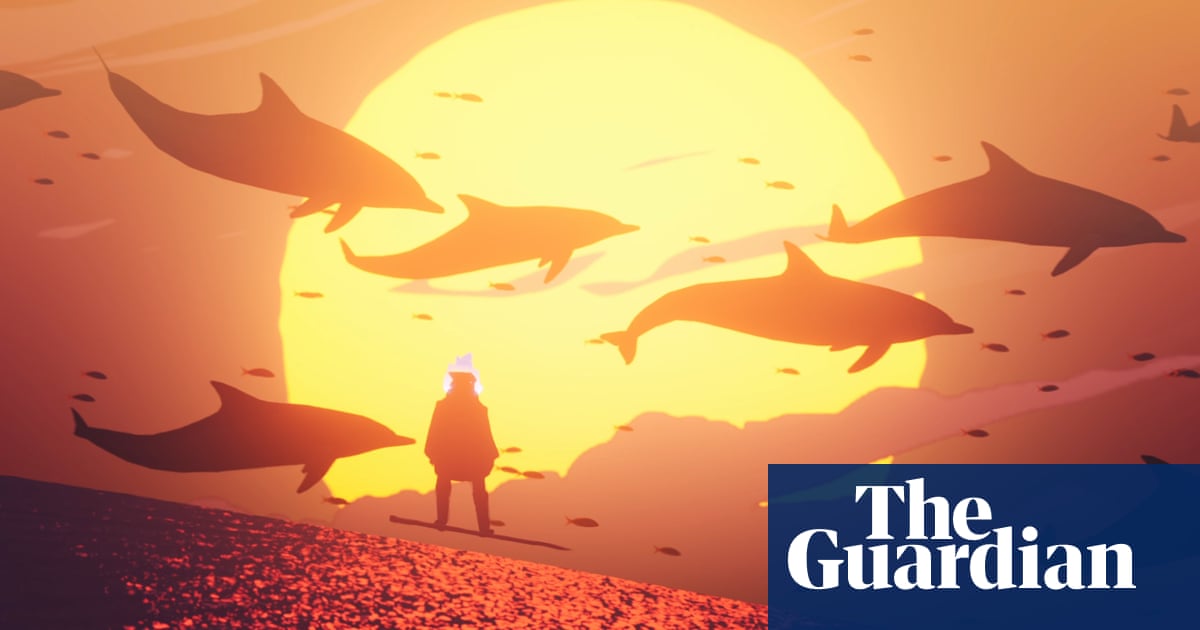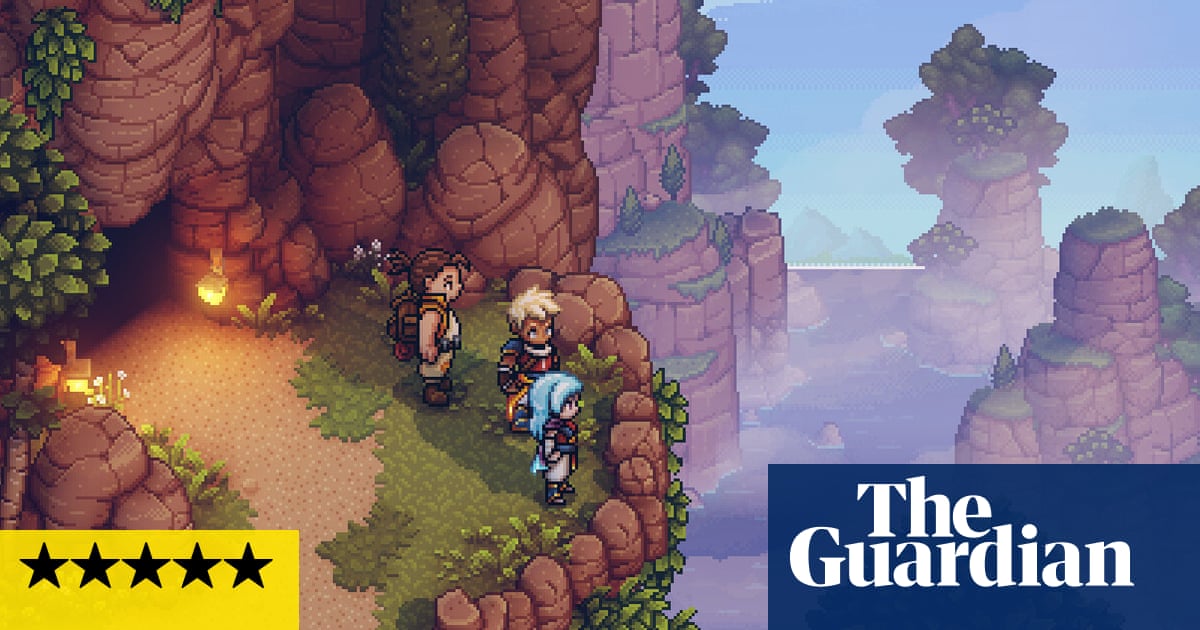
racey Williams has been a beachcomber for most of her life. It started with school holidays to north Cornwall in the 1960s, searching for shells, sea glass and mermaids’ purses among the rocks and sand. In the 1980s, after her parents moved to a 300-year-old clifftop house in Bigbury-on-Sea, in south Devon, Williams and her father would seek out fossils in their back garden and down by the shore.
“But I’d also find old bottles, figurines, medieval rings, and bring them in, clean them up,” she says. “You know, chance finds.” Then, 23 years ago, everything changed. “I started finding Lego pieces washed up on the shore,” she explains. “Flippers, scuba tanks, the occasional dragon or octopus. By that time I had two young children, and we could take buckets down to the beach and just fill them with the amount of Lego coming in.”
The Lego had come from a spill on 13 February 1997, when a cargo ship called the Tokio Express was hit by a freak wave off the coast of Cornwall, spilling 62 containers into the sea, including one filled with nearly 5m pieces of Lego, bound for New York.
At first, Williams says, the Lego collecting was “a bit of fun” on summer holidays, something she forgot about once her children started secondary school. Then, about 10 years ago, she moved to Newquay. “And I went down to Perranporth beach and there was the Lego, still coming in.”
Williams’ perspective changed. “There was just so much plastic on the beach and I started to wonder where it had all come from.” She got a dog, a collie/spaniel cross called Jess, and together they walked the coastline every day, Williams collecting and documenting the plastic debris. She set up Facebook pages recording her finds, including one called Lego Lost At Sea. Others started to get in touch, growing into a community of 50,000 followers, with beachcombers around the world monitoring where the Lego and other cargo spills were turning up, and in what quantities.
“We’ve had people contacting us about washed-up spills of Nike trainers. Hewlett-Packard cartridges, all with the same batch number. Hewlett-Packard didn’t disclose exactly where the spill took place, but they reached Florida, Bermuda, Norway… ”
Initially mapping the spills with a fellow beachcomber, Williams then teamed up with oceanographers and universities to help research the weathering and persistence of plastic in the marine environments. She also started to catalogue her finds, which she calls “artefacts of the Anthropocene”, arranged into colour-coded grids that bear a striking resemblance to the drawers of peculiar ethnographic objects in Oxford’s Pitt Rivers Museum, pieces of disposable history arranged with a scientific reverence; a taxonomy of plastic.
“I see them all as ingredients in the plastic soup,” Williams says. “Look closely at the grids, and you’ll see Lego and children’s toys, but also Rawlplugs, tile spacers, Monopoly houses, cigarillo tips, curtain hooks, biofilters, Smarties tube lids, fishing beads, broken security seals, razor parts, bits of toothbrushes, roofing screw caps, medical lancets, golf tees, false teeth, plastic soldiers, posties’ rubber bands, bungs and stoppers.”
Some of the items in these grids – cowboys and submarines from Kellogg’s cereals, a Talon jet car – are children’s toys from the 1950s and early 60s. Williams recently found a Hax strawberry-shaped syrup bottle that, according to the Museum of Design in Plastics, might be 70 years old.
“It just doesn’t go away,” she says. “It’s also important to remember that, of all the plastic that enters the ocean, 70% sinks to the bottom. We only see what floats ashore. How many billions of items from cargo spills are lying on the seabed? What does the bottom of the ocean look like?”
Williams posts most of her grids and montages on her Twitter account, @LegoLostAtSea, which she refers to as her “online journal”. She describes what she’s doing as effectively an archaeology of the future. “Unless you record it,” she says, “how do people make sense of it? Sometimes you find a piece of plastic with a brand name in it. You’ll Google it. Nothing comes up. Each of these items has a history that involved a company, a designer, factory staff, totally forgotten. Very often, the seaweed washes up all these tiny blobs of grey plastic. I was in London one day, walking past Selfridges, and they had a display of old electronic equipment, circuit boards from televisions, computers… I thought, that’s it! It’s the colour of that plastic from old electrical goods. How will the archaeologist of the future make sense of that?”
A look through Williams’ extensive archive of beach photos reveals far more distressing images than the ones she presents on her Twitter feed: photos of dead birds caught in marine debris, trash piles of plastic and discarded fishing gear. She saves these images for news agencies and charities. The job of the @LegoLostAtSea account is something different – to focus on our disposable material culture and the stories behind it.
“It’s all our fault,” she says, “but I would say most people have no idea that their old possessions are washing up on the beach, whether from storm drains, or landfill sites washing into the sea. I’m finding lots of pieces of cut-up credit cards at the moment. What I’m trying to do is seek out things that interest me and might interest other people. Everything you find is a sort of message in a bottle. I’m interested in the story behind it.”
When people tell Williams that they also find her colour-coded grids of plastic trash strangely beautiful, or consider them works of art, she balks. “The collages aren’t meant to be beautiful,” she says. “They’re not art. The emotions I feel when on a wild, windswept beach at dawn or dusk might be excitement, anticipation, but not at the plastic. What you’re looking at in those montages is our history, but also my bewilderment, frustration, dismay.”
Yet there are positives. Williams thinks that charting the Lego spill has helped raise awareness. “It’s encouraged people to get into beach cleaning and other environmental action,” she says, “and it helps explain things like ocean currents and the dangers of plastic pollution. Although so much plastic on the beach can be overwhelming, sorting through it can be strangely cathartic. It’s order from chaos.”
• Tracey Williams is compiling a book of her images; go to @LegoLostAtSea to see more of her work.












